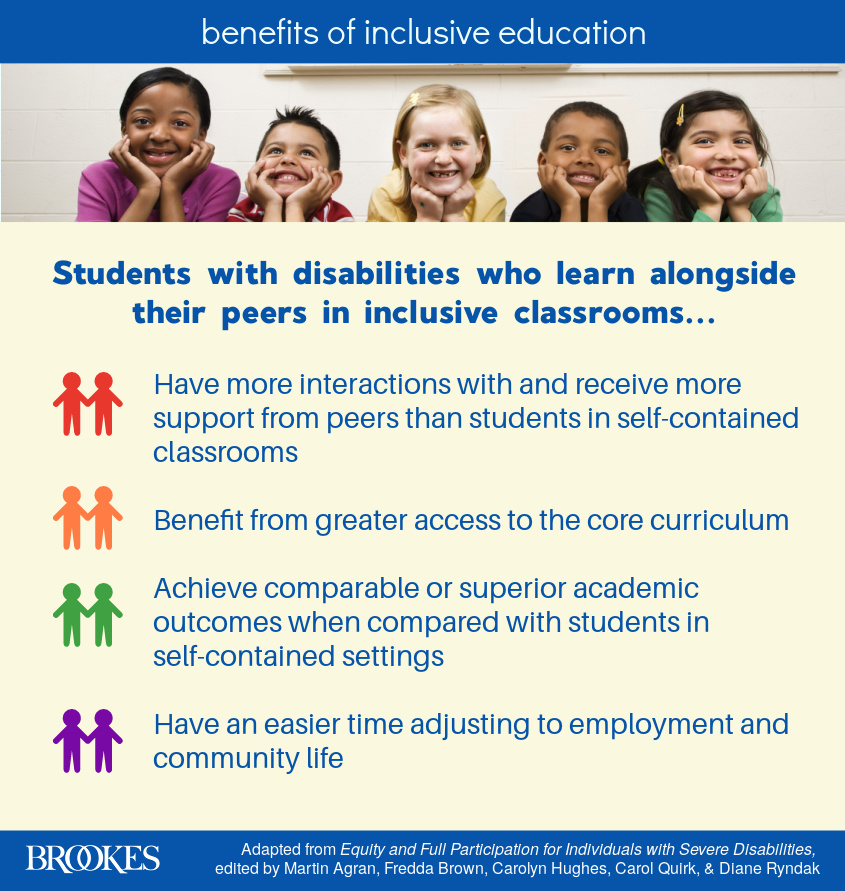Benefits of Inclusion in the Classroom
Inclusion in the classroom refers to the practice of integrating students with disabilities or special needs into regular education settings. This approach promotes diversity, equality, and equal opportunities for all students. In this article, we will explore the numerous benefits of inclusion in the classroom and how it positively impacts the learning experience for all students involved.
Promoting Social Interaction and Acceptance
One of the key advantages of inclusion in the classroom is the promotion of social interaction and acceptance among students. When students with disabilities are included in regular classrooms, it provides an opportunity for their peers to develop empathy, understanding, and acceptance of individual differences. This fosters a sense of belonging and reduces the stigma associated with disabilities.
Enhancing Academic Achievement
Inclusive classrooms have been found to enhance academic achievement for all students. When students with disabilities are included, it encourages teachers to adopt diverse teaching strategies and approaches that cater to the unique needs of each student. This individualized attention and support can lead to improved academic performance and a deeper understanding of the subject matter.
Promoting Personal and Emotional Development
Inclusion in the classroom also promotes personal and emotional development for both students with disabilities and their peers. It provides opportunities for students to develop patience, empathy, and problem-solving skills. Students learn to appreciate the strengths and abilities of others, fostering a positive and inclusive learning environment.
Building Self-Confidence and Self-Esteem
When students with disabilities are included in regular classrooms, it helps build their self-confidence and self-esteem. They are allowed to participate in classroom activities, contribute their unique perspectives, and showcase their abilities. This sense of belonging and accomplishment boosts their self-confidence and encourages them to actively engage in the learning process.
Preparing for the Real World
Inclusive classrooms provide a realistic representation of the diverse society we live in, preparing students for the real world. By interacting with individuals with disabilities, students learn to appreciate and respect diversity, promoting a more inclusive society. This prepares them to become compassionate and empathetic citizens in their future personal and professional lives.

Inclusion in the classroom offers numerous benefits for all students involved. It promotes social interaction, enhances academic achievement, fosters personal and emotional development, builds self-confidence, and prepares students for the real world. By embracing inclusion, we create a more inclusive and equitable society where every individual is valued and given equal opportunities to thrive
Frequently Asked Questions about Benefits of Inclusion in the Classroom
1. What is inclusion in the classroom?
Inclusion in the classroom refers to the practice of educating students with disabilities or special needs alongside their typically developing peers in a general education setting.
2. What are the benefits of inclusion in the classroom?
Inclusion promotes social interaction, fosters a sense of belonging, enhances academic learning, develops empathy and understanding, and prepares students for the real world.
3. How does inclusion benefit students with disabilities?
Inclusion provides students with disabilities access to quality education, exposure to diverse learning experiences, increased self-confidence, improved social skills, and better opportunities for future success.
4. What are the benefits of inclusion for typically developing students?
Typically developing students in inclusive classrooms gain a deeper understanding and appreciation of diversity, develop empathy and compassion, learn tolerance and acceptance, and enhance their own academic and social skills.
5. How does inclusion support academic learning?
Inclusion encourages collaboration and cooperation among students with diverse abilities, leading to improved problem-solving skills, critical thinking, creativity, and overall academic achievement.
6. What strategies can teachers use to promote inclusion in the classroom?
Teachers can use differentiated instruction, cooperative learning activities, peer tutoring, assistive technologies, and individualized support to promote inclusion and meet the diverse needs of all students.
7. How does inclusion benefit the overall school community?
Inclusion fosters a sense of community, breaks down stereotypes and prejudices, promotes a positive school climate, and prepares all students to live and work in a diverse society.
8. Are there any challenges associated with inclusion in the classroom?
Yes, some challenges include the need for additional resources and support, adapting curriculum and instructional strategies, addressing individual student needs, and ensuring effective collaboration among educators.
9. How can parents support inclusion in the classroom?
Parents can actively participate in their child’s education, communicate with teachers and school staff, advocate for inclusive practices, and promote acceptance and understanding at home.
10. Are there any legal requirements for inclusion in the classroom?
Many countries have laws and policies, such as the Individuals with Disabilities Education Act (IDEA) in the United States, that mandate inclusive education and provide guidelines for supporting students with disabilities in general education settings.




